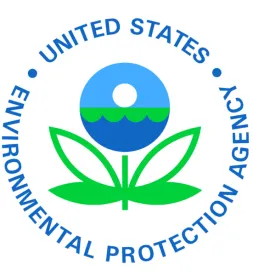While much of the environmental bar was focused on the Waters of the U.S. rulemaking, on December 11, U.S. EPA Acting Administrator Andrew Wheeler signed the new hazardous waste pharmaceutical rule. The final rule retains a proposed requirement, opposed by industry, that prescription pharmaceuticals sent from health care facilities to reverse distributors first be considered “disposed of,” regulated as solid waste and evaluated for hazardous classification at the health care facility. This rule will impose significant new obligations on health care providers, including pharmacies and long-term care providers, as well as forward and reverse distributors of pharmaceuticals.
Decades of Policy. In the 1980s and 1990s, U.S. EPA took the position in policy memoranda that pharmaceuticals in the reverse distribution chain were “not considered wastes until a determination has been made to discard them.” That approach worked well for health care providers, who frequently relied on reverse distributors to determine whether their unused prescription and over-the-counter medications could be credited/reused/reclaimed or should be discarded. Under the George W. Bush Administration, U.S. EPA proposed to classify returned pharmaceuticals as “universal waste” entitled to relaxed management standards, but never finalized that rulemaking after concerns were raised regarding the potential diversion of narcotics and other medications regulated by the Drug Enforcement Agency (“DEA”). The Obama Administration proposed the current rule in September, 2015, offering an entirely new set of management standards for unused pharmaceuticals. In the subsequent three years, a number of industry participants met with U.S. EPA as well as the Office of Management and Budget regarding the scope of the rule.
The New Approach. In the December 11 publication of the final rule, U.S. EPA expressed its concern that many industry participants have come to disregard the intent behind the agency’s prior guidance, and erroneously believed that it was a blanket statement that no pharmaceuticals going through reverse distribution were considered solid waste. As a result, the final rule treats prescription pharmaceuticals—but not non-prescription pharmaceuticals—as having been “discarded” by a pharmacy, hospital, or other health care provider when it decides to ship the potentially creditable material to a reverse distributor. Upon being “discarded,” those pharmaceuticals become solid waste, triggering management obligations under the Resource Conservation and Restoration Act (RCRA) for pharmaceuticals that are characteristically toxic, or that meet the definition of certain “listed” wastes, such as P and U listed acutely hazardous substances. In order to accommodate the unique market arrangements for pharmaceuticals, EPA’s final rule establishes an industry-specific set of requirements for prescription pharmaceuticals under RCRA. With regard to non-prescription pharmaceuticals, EPA took a different approach and will continue to allow health care providers to ship potentially reusable and reclaimable over-the-counter drugs and dietary supplements as recyclable materials outside the RCRA waste regime to reverse distributors, where the actual decision to reuse/reclaim or discard the material will be made.
The pharmaceutical waste management standards found in the new 40 CFR Part 266, Subpart P establish requirements for health care facilities (a term broadly defined to include hospitals, clinics, pharmacies, and long-term care facilities) as well as logistics providers known as “reverse distributors.” The final rule requires health care facilities that dispose of prescription pharmaceuticals to register with U.S. EPA, and to separate listed or characteristically hazardous (toxic, flammable, reactive, or corrosive) pharmaceuticals from unlisted, non-hazardous pharmaceuticals. Health care facilities will need to adopt training programs for staff to comply with the rule, and will need to dispose of hazardous pharmaceuticals within one year of their being determined to be a waste. The rule also creates an exemption from certain existing requirements for containers of medications that would be considered acutely hazardous when made a waste, such as Coumadin, so that facilities no longer have to tally the weight of Coumadin packaging and consider it acutely hazardous waste.
Notable changes from the proposal applicable to reverse distributors include (i) authorization to accumulate hazardous waste pharmaceuticals for up to 180 days, rather than 90 days as proposed, (ii) an exemption for managing materials subject to recall or a litigation hold and (iii) authorization to complete the initial sorting process within 30 days, rather than 21 days as proposed.
The final rule includes four other significant elements. It bans the practice of flushing hazardous waste medications down the toilet (“sewering”). The rule exempts Food and Drug Administration-approved nicotine replacement therapies, such as patches and gum, from hazardous waste disposal requirements. The rule also exempts from regulation medications collected during drug take-back programs and events, placing them within the Congressionally-created household hazardous waste exemption. Finally, the rule eliminates the dual regulation of hazardous waste pharmaceuticals under RCRA if they are also regulated by the DEA as controlled substances.
Why This Matters to the Health Care Industry. The final rule fundamentally changes U.S. EPA's long-held position on the point at which a pharmaceutical product is considered a solid waste under RCRA. That change will create significant regulatory uncertainty, and potential liability, for entities in the pharmaceutical distribution chain that suddenly find themselves evaluating compliance with the new rule. While Acting Administrator Wheeler signed the rule on December 11, the rule will not become effective until 6 months after it is published in the Federal Register. The rule may also be subject to petitions for reconsideration, or to challenge in the Court of Appeals for the D.C. Circuit.






 />i
/>i
